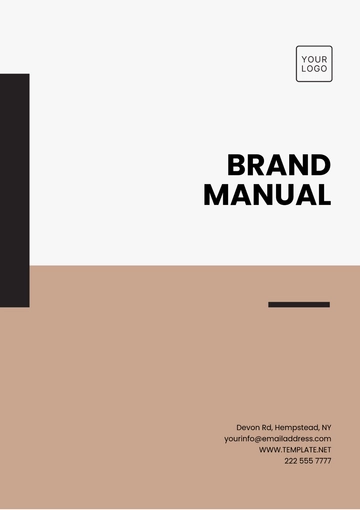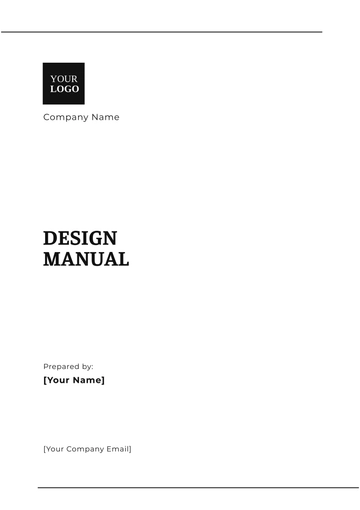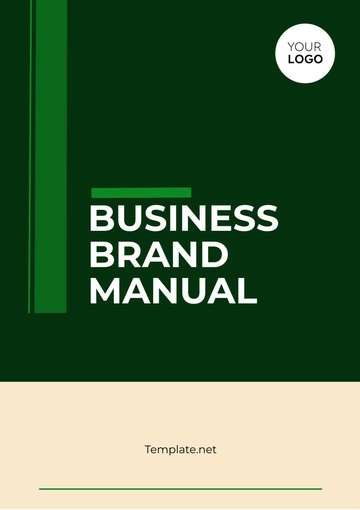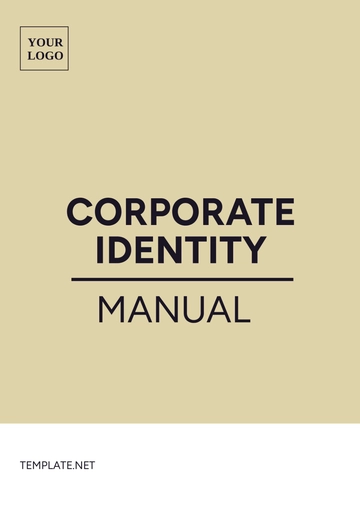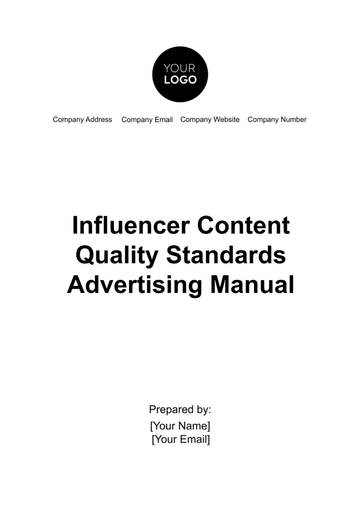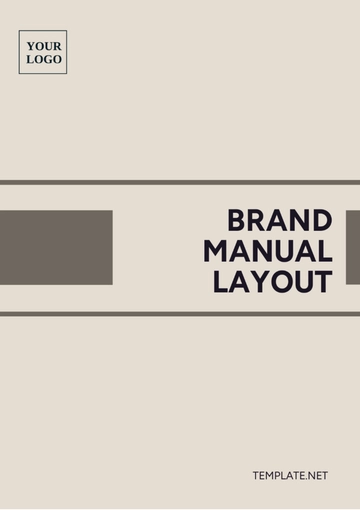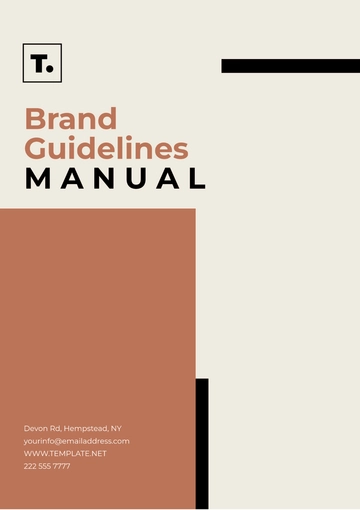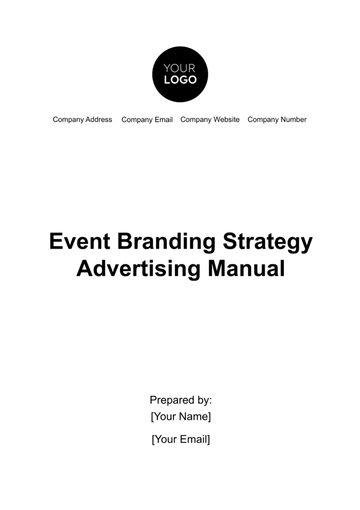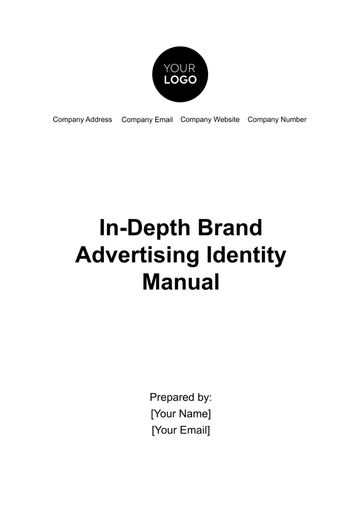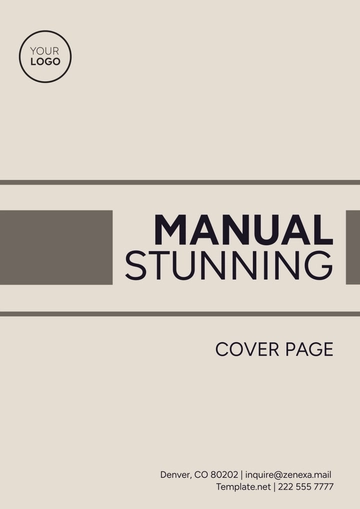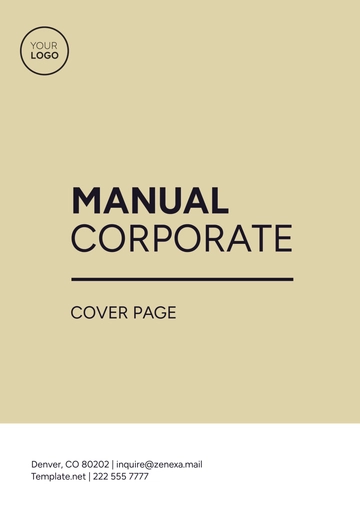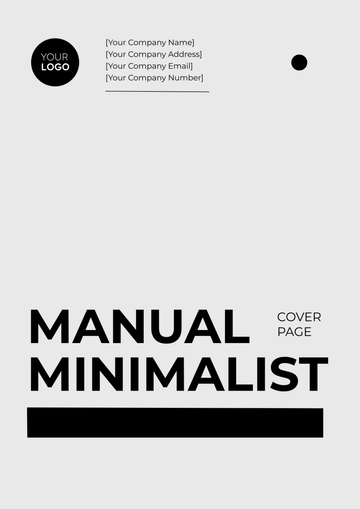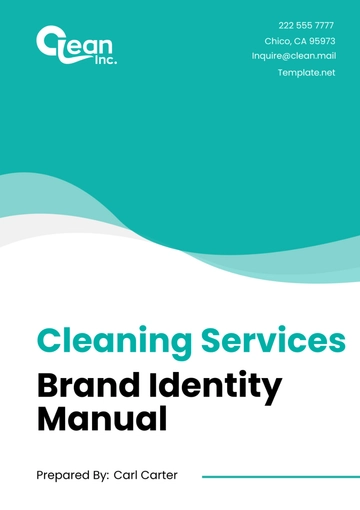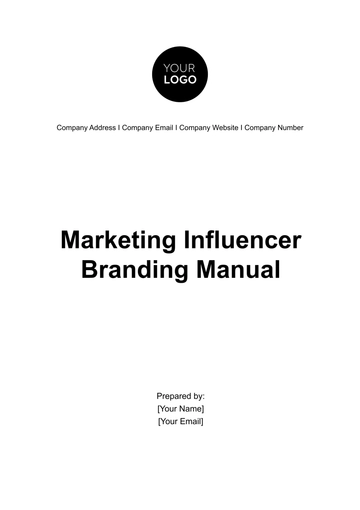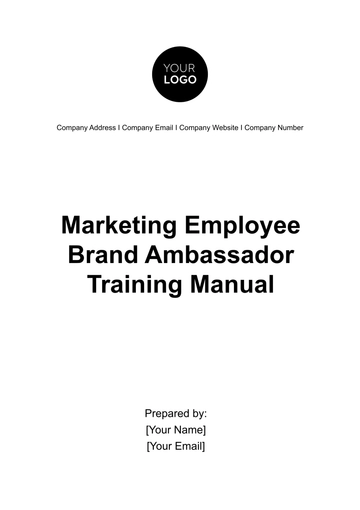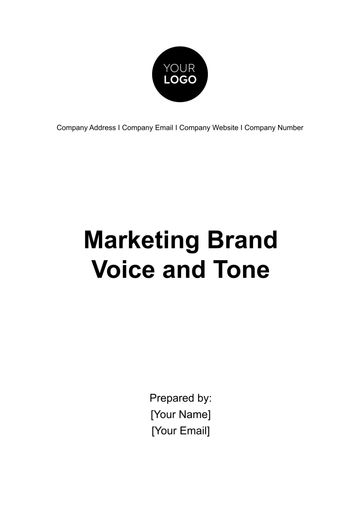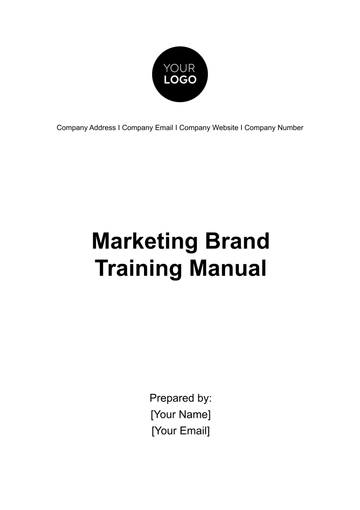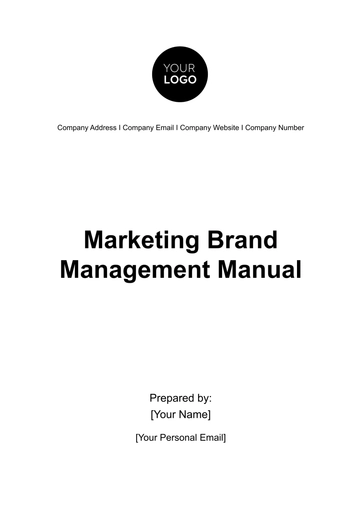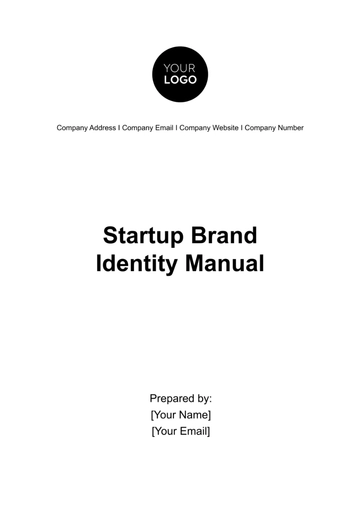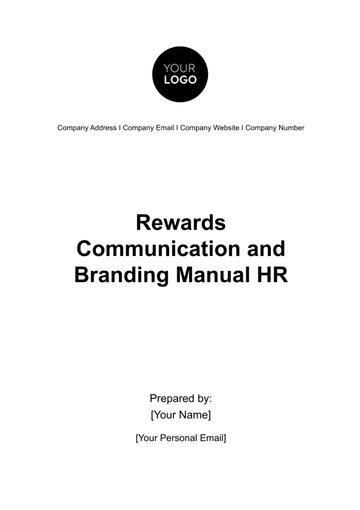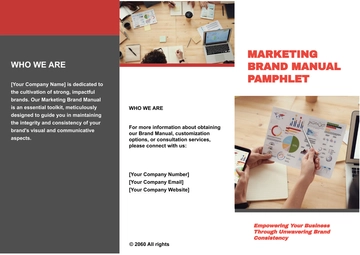Free Brand Manual Layout
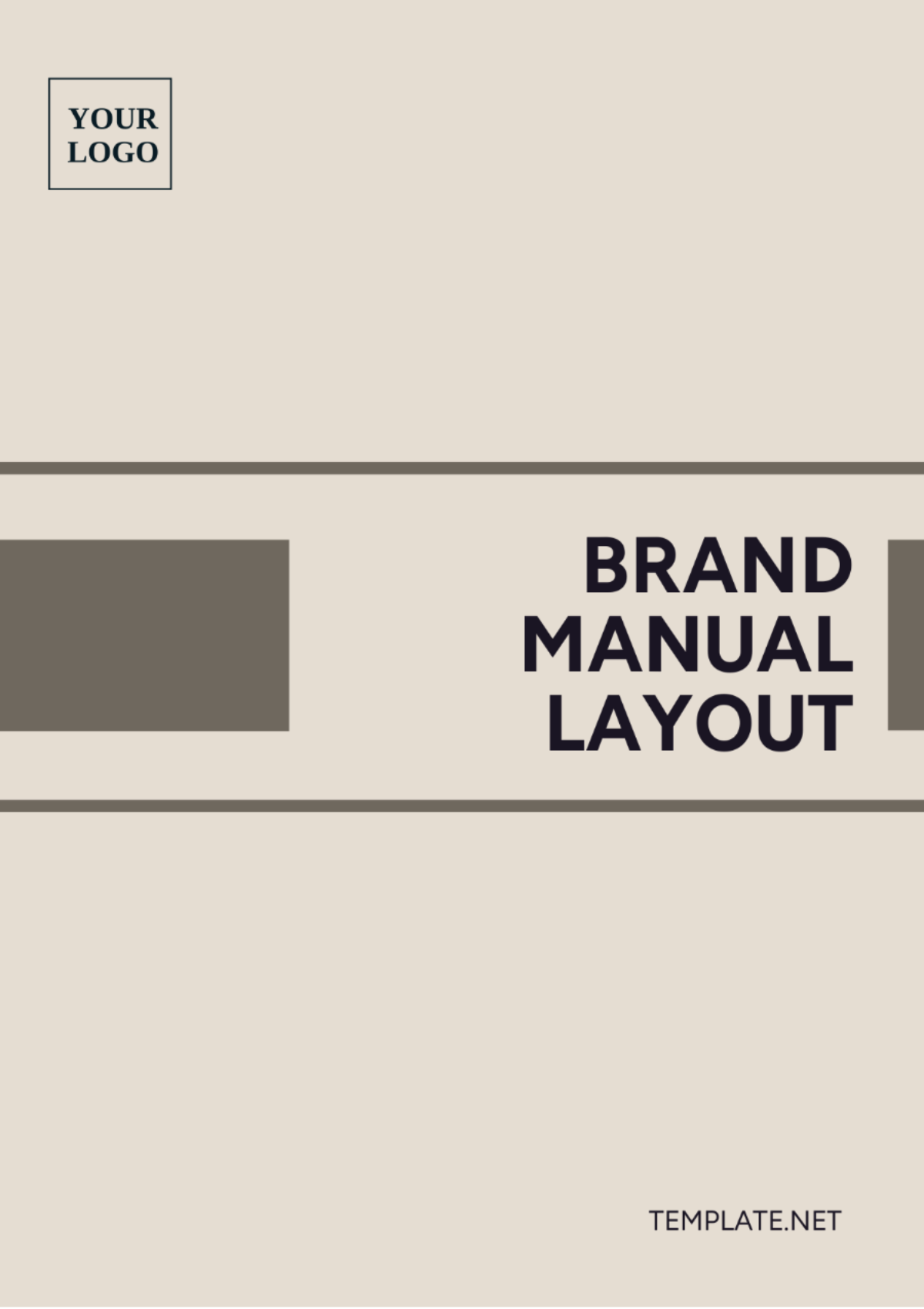
Name | Company | Department | Date |
|---|---|---|---|
[Your Name] | [Your Company Name] | [Your Department] | [Date] |
I. Introduction to Brand Identity
Consistency in brand presentation is vital for establishing brand recognition and fostering trust among consumers. A cohesive brand identity creates a memorable impression, distinguishes the brand from competitors, and reinforces brand values. By adhering to the guidelines outlined in this manual, [Your Company Name] can ensure that every touchpoint with the audience reflects the brand's essence and values consistently.
II. Brand Elements and Guidelines
1. Logo Usage
Logo Variations
[Your Company Name]'s logo exists in various formats to accommodate different use cases. The primary logo, consisting of the logomark and logotype, is preferred for most applications. However, alternative versions, such as monochrome or simplified variations, are available for specific contexts.
Clear Space and Minimum Size
Maintaining clear space around the logo ensures visibility and readability. The minimum size of the logo should be adhered to, both in print and digital applications, to preserve legibility and visual impact.
2. Color Palette
Primary Colors
[Your Company Name]'s primary color palette consists of [Primary Color 1], [Primary Color 2], and [Primary Color 3]. These colors should be used consistently across all brand materials to reinforce brand recognition and identity.
Secondary Colors
In addition to the primary colors, [Your Company Name] has a set of secondary colors that complement the primary palette. These colors can be used to add depth and versatility to brand communications while maintaining visual harmony.
3 Typography
Primary Typeface
The primary typeface for [Your Company Name] is [Primary Typeface], chosen for its readability and versatility across various mediums. It should be used for all body text in brand communications to maintain consistency and legibility.
Secondary Typeface
For headlines, titles, and other prominent text, [Secondary Typeface] is recommended. This typeface adds visual interest and emphasis while remaining consistent with the brand's overall aesthetic.
III. Application Guidelines
1. Print Materials
Stationery
When designing stationery items such as letterheads, envelopes, and business cards, ensure that the brand elements are prominently featured and aligned with the guidelines outlined in this manual. Consistency in design and layout reinforces [Your Company Name]'s professionalism and attention to detail.
Marketing Collateral
From brochures and flyers to posters and banners, all marketing collateral should adhere to the brand guidelines to maintain a cohesive brand image. Consistent use of brand elements and adherence to typography and color guidelines ensure brand recognition and reinforce brand identity.
2. Digital Presence
Website Design
The website serves as a digital storefront for [Your Company Name], making it essential to uphold brand consistency online. Ensure that the website design reflects the brand's visual identity, utilizing consistent colors, typography, and imagery to create a seamless brand experience for visitors.
Social Media
Social media platforms offer opportunities for [Your Company Name] to engage with its audience and reinforce brand messaging. Maintain consistency in profile imagery, cover photos, and post designs across all social media channels to strengthen brand recognition and trust.
IV. Imagery Guidelines
1. Photography Style
Brand Aesthetic
Photography plays a crucial role in conveying [Your Company Name]'s brand personality and values. The preferred photography style should align with the brand's aesthetic, portraying authenticity, diversity, and professionalism. Images should evoke emotions that resonate with the target audience while maintaining visual consistency across all platforms.
Image Usage
When selecting or creating images for brand use, ensure that they align with [Your Company Name]'s brand identity and messaging. Avoid stock photos that appear generic or do not reflect the brand's values. Whenever possible, use original photography to add authenticity and uniqueness to brand communications.
2. Iconography
Icon Set
A set of custom icons has been developed for [Your Company Name] to complement brand communications. These icons should be used consistently across all materials to enhance visual appeal and reinforce key messages. Avoid using generic or unrelated icons that may dilute the brand's identity.
Icon Usage Guidelines
Icons should be used sparingly and purposefully to support content and improve visual communication. Ensure that icons are legible and scalable across different platforms and devices. Maintain consistency in icon style and design to reinforce brand recognition.
V. Brand Voice and Tone
1. Tone of Voice
Brand Personality
[Your Company Name]'s brand voice should reflect its personality, values, and target audience. Whether the tone is formal, friendly, or authoritative, consistency in communication style is essential to building brand trust and loyalty.
Audience Consideration
When communicating with different audience segments, consider their preferences, needs, and expectations. Tailor the brand voice and tone to resonate with specific audience demographics while maintaining overall brand consistency.
2. Messaging Guidelines
Key Messages
Key messages are the core statements that encapsulate [Your Company Name]'s value proposition, mission, and unique selling points. Ensure that key messages are communicated consistently across all brand materials to reinforce brand identity and drive brand recognition.
Content Guidelines
Content should be informative, engaging, and relevant to the target audience. Whether creating website copy, social media posts, or marketing materials, adhere to the brand voice and tone guidelines to maintain consistency and authenticity.
VI. Brand Application Checklist
1. Brand Review Process
Approval Workflow
Establish a clear approval workflow for brand materials to ensure compliance with brand guidelines. Designate individuals or teams responsible for reviewing and approving brand communications before they are published or distributed.
Feedback Mechanism
Encourage feedback from stakeholders regarding brand materials and guidelines. Implement a feedback mechanism to collect suggestions, identify areas for improvement, and address any concerns related to brand consistency and integrity.
2. Compliance Monitoring
Regular Audits
Conduct regular audits to assess adherence to brand guidelines across various touchpoints. Identify any deviations or inconsistencies and take corrective action to maintain brand integrity.
Training and Education
Provide training sessions or resources to educate employees, partners, and vendors on brand guidelines and best practices. Empower them to become brand advocates and guardians of brand consistency.
VII. Brand Assets and Templates
1. Logo Files
File Formats
Provide guidelines on the appropriate file formats for different use cases, such as vector formats (e.g., .ai, .eps) for scalability and raster formats (e.g., .png, .jpg) for web and digital applications.
Usage Restrictions
Specify any restrictions or guidelines regarding logo modification, resizing, or color alterations to ensure brand consistency and integrity.
2. Color Codes
Pantone, RGB, and CMYK Values
Provide Pantone, RGB, and CMYK color codes for all primary and secondary brand colors to ensure accurate color reproduction across various mediums.
Color Swatches
Include color swatches or color palette files for easy reference and implementation in design software programs.
VIII. Brand Guidelines Review and Updates
1. Revision History
Maintain a detailed revision history documenting any updates or changes made to the brand guidelines, including the date of revision and a brief description of the modifications.
2. Version Control
Implement version control measures to track and manage different iterations of the brand manual, ensuring that stakeholders always have access to the latest guidelines.
IX. Conclusion
1. Brand Consistency
Consistency is key to building a strong and memorable brand identity. By following the guidelines outlined in this manual, [Your Company Name] can ensure that all brand communications are cohesive, professional, and reflective of the brand's values and personality.
2. Brand Evolution
As [Your Company Name] evolves and grows, the brand manual should be regularly reviewed and updated to reflect any changes in brand strategy, messaging, or visual identity. Continuously strive for improvement and innovation while staying true to the core principles of the brand.
- 100% Customizable, free editor
- Access 1 Million+ Templates, photo’s & graphics
- Download or share as a template
- Click and replace photos, graphics, text, backgrounds
- Resize, crop, AI write & more
- Access advanced editor
Elevate your brand identity with the Brand Manual Layout Template from Template.net. This editable and customizable gem is your passport to crafting a cohesive brand presence. Seamlessly tweak every detail to perfection with ease, courtesy of our AI Editor Tool. Unleash your brand's potential and stand out from the crowd effortlessly!
